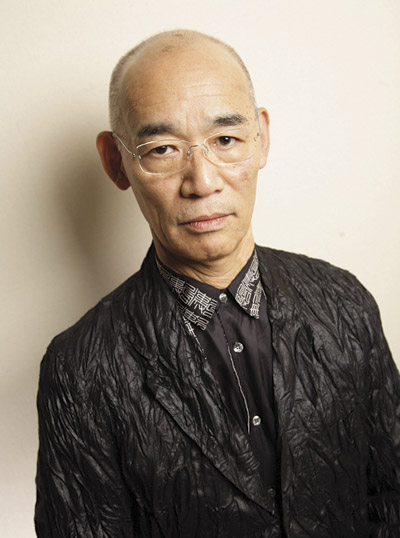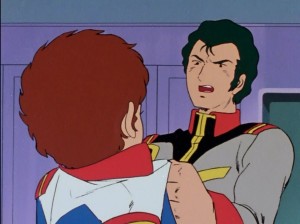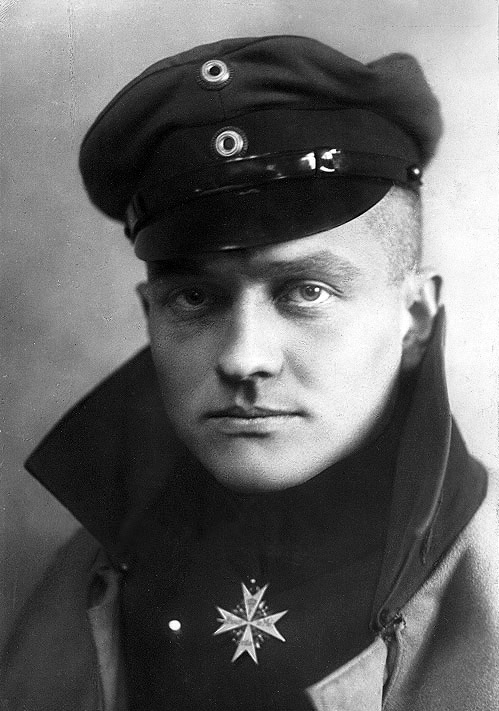Yoshiyuki Tomino: The Interview
November 19, 2015 · 1 comment
By Andrew Osmond.
 I’m head-high with the Big G and girding my loins to meet the fabled father of Gundam. Or to put it another way, I’m in the eighth-floor lobby of the Hotel Gracery Shinjuku in Tokyo, looking out the window at a life-sized head of Godzilla. Perhaps the King of Monsters is glowering at a multiplex a few minutes away, which is playing Gundam movies in a week-long strand of the Tokyo Film Festival. Yoshiyuki Tomino will take the stage there soon to talk about them. But before that, he’s granted a press interview, and I’m wondering if Godzilla is warning me.
I’m head-high with the Big G and girding my loins to meet the fabled father of Gundam. Or to put it another way, I’m in the eighth-floor lobby of the Hotel Gracery Shinjuku in Tokyo, looking out the window at a life-sized head of Godzilla. Perhaps the King of Monsters is glowering at a multiplex a few minutes away, which is playing Gundam movies in a week-long strand of the Tokyo Film Festival. Yoshiyuki Tomino will take the stage there soon to talk about them. But before that, he’s granted a press interview, and I’m wondering if Godzilla is warning me.
Tomino has a fearsome reputation among anime fans. The man nicknamed “Kill ’em all” reportedly gets very grumpy if people raise subjects or make observations which displease him. There are fan legends that he’ll thump anyone who brings up certain Gundam titles, particularly those containing the word “Wing.” Jonathan Clements remembers Tomino whacking a Gainax exec with a plastic fan for suggesting he was part of an outmoded establishment. In one interview, Tomino was even quoted as saying he had murderous thoughts which he sublimated by making anime about war, although he may just have been spooking gullible journalists.
But it seems I’ve caught Tomino on a good day. Talking with the mecha legend, in a hotel room near Godzilla’s bonce, isn’t a relaxing experience – Tomino has the kind of intense, Gundam beam-cannon gaze that would make a kaiju blink – but he’s immensely generous with his answers. Towards the end of our interview, he even forestalls an assistant winding things up, in order to answer a question we didn’t get to in the allotted time. “This is very important, so I asked her to wait,” Tomino explains courteously. The question’s about Char and his debt to the Red Baron – Tomino seems anxious that foreigners understand what he took from their history.
Tomino has directed numerous anime within the Gundam franchise, including Zeta Gundam, Gundam ZZ, Turn A Gundam and Gundam Reconguista in G (all acquired by Anime Limited). Outside Gundam, he’s responsible for the likes of Brave Reideen, Space Runaway Ideon, Aura Battler Dunbine and Brain Powerd. But in this interview, I focus on his creation of the first Gundam in 1979, widely regarded as a landmark in SF anime, and now debuting in Britain on an Anime Limited Blu-ray.
The first Gundam series showed the perspectives of characters on both sides of a war, Team Zeon as much as Team Earth. Why did Tomino tell the story this way? “Up until the 1960s,” Tomino says, “I was collecting information about the war which the Japanese had experienced twenty years previously. I had collected basic information about what war is all about. Most of the war-related dramas and movies were quite one-sided, described from one perspective. However, war is something where millions of people meet and fight each other, each believing in justice on their own sides. Mecha anime tends to be one-sided, but considering war objectively, I thought I should describe war from both sides.”
 Tomino adds, “Gundam was initially a TV animation that would last for hours [it lasts about fifteen], so I thought that was long enough to describe both sides’ perspectives. Also, the main audience would have been children. I didn’t want to guide them in a certain direction in terms of ideology.” But for many adult viewers, it was the three later movie compilations that truly turned them into fans. “We made films so that [Gundam’s] message could be conveyed more clearly,” says Tomino. “The TV series emphasises scenes of war, more than I wanted; the films emphasise the story more.”
Tomino adds, “Gundam was initially a TV animation that would last for hours [it lasts about fifteen], so I thought that was long enough to describe both sides’ perspectives. Also, the main audience would have been children. I didn’t want to guide them in a certain direction in terms of ideology.” But for many adult viewers, it was the three later movie compilations that truly turned them into fans. “We made films so that [Gundam’s] message could be conveyed more clearly,” says Tomino. “The TV series emphasises scenes of war, more than I wanted; the films emphasise the story more.”
I ask whether the first Gundam is an anti-war work. Tomino is unequivocal: “Yes, definitely so.”
Both the TV and cinema versions of Gundam highlight the conflict between two young men: Amuro Ray, the electronics geek who becomes the accidental pilot of the Gundam, and his nemesis Char Aznable, the crimson Zeon commander once voted the fourth greatest anime character ever (in a Japanese poll in 2000). Did Tomino create one character before the other, or both together? “I created them simultaneously,” says Tomino, “because to construct the framework of the drama, we need to create them together.” Ah, but is Char more central than Amuro, or vice versa? “That’s a very difficult question to answer. In creating drama, Char becomes the dramatically strong character. Amuro was put in as the main character…” Amuro appears in every Gundam episode, whereas Char disappears for long stretches of the story, after all. “It was hard to make Amuro as strong a character as Char,” Tomino concedes. “Amuro was a very ordinary person, so it was very hard…”
 In an early episode of the series (part 9), Amuro is punched by his angry commander Bright Noa – one of many thumps, slaps and jaw-socks in old-school Gundam. The boy protests, “Even my father never hit me,” a line which became rather famous in Japan. Gundam fan Satoshi Kon even sneaked it into the opening minutes of his films Tokyo Godfathers, where the wino Gin bops truculent teenager Hana on the head. Among other things, you might see the ‘father’ line as illustrating a clash between the disciplinary attitudes of old and young in Japan. Gundam itself is often seen as reflecting generational conflict through the Newtypes. So what are Tomino’s own thoughts on the “father never hit me” line?
In an early episode of the series (part 9), Amuro is punched by his angry commander Bright Noa – one of many thumps, slaps and jaw-socks in old-school Gundam. The boy protests, “Even my father never hit me,” a line which became rather famous in Japan. Gundam fan Satoshi Kon even sneaked it into the opening minutes of his films Tokyo Godfathers, where the wino Gin bops truculent teenager Hana on the head. Among other things, you might see the ‘father’ line as illustrating a clash between the disciplinary attitudes of old and young in Japan. Gundam itself is often seen as reflecting generational conflict through the Newtypes. So what are Tomino’s own thoughts on the “father never hit me” line?
“I am conscious of the scene’s importance, because children need certain discipline,” says Tomino. He cites European boarding-school culture, with children living together in dormitories, and its own version of senpai-kohai hierarchy. Tomino makes clear he’s not talking about the extremes of old-style discipline, such as the days when parents could whip their children. However, he suggests that cultures which roundly denounce the discipline of older generations as violence will use other forms of violence themselves. “It is a one-sided opinion to assume everything as violence… Not using physical violence seems kind, but that is not always true. At some point in life, human beings have to overcome pains; at least in drama and fiction, surely they are okay [to be represented]. Do you think that idea is wrong?” Tomino asks. I say I’ll think about it and Tomino chuckles.
 We move from Amuro to Char, and the character’s debt to the historic fighter-pilot Manfred von Richtofen, better known as the “Red Baron” of World War I. “When I studied the Red Baron’s career,” Tomino explains, “I found out that one soldier, no matter his achievements, does not affect the overall result of the war at all. I learned that from World War I. What I learned was that until that war, there existed a kind of chivalry. After World War I it just became just mass conflict… Between the UK, France and Prussia [the lead state of the German empire in World War I], there was a kind of manner in warfare, and I managed to put that into the story. I wanted to express the Christian culture; I am angry that Japanese people know nothing about that. That’s why I don’t want Gundam to be just merely a robot animation – there are some human aspects that I like to emphasise.”
We move from Amuro to Char, and the character’s debt to the historic fighter-pilot Manfred von Richtofen, better known as the “Red Baron” of World War I. “When I studied the Red Baron’s career,” Tomino explains, “I found out that one soldier, no matter his achievements, does not affect the overall result of the war at all. I learned that from World War I. What I learned was that until that war, there existed a kind of chivalry. After World War I it just became just mass conflict… Between the UK, France and Prussia [the lead state of the German empire in World War I], there was a kind of manner in warfare, and I managed to put that into the story. I wanted to express the Christian culture; I am angry that Japanese people know nothing about that. That’s why I don’t want Gundam to be just merely a robot animation – there are some human aspects that I like to emphasise.”
Tomino says he’s motivated by considering ideas in a realistic context. Citing his recent series Gundam Reconguista in G, which revolves around a space elevator, Tomino says he was inspired by thinking about what the structure would mean for the world’s politics and global relations. He also claims Gundam Reconguista inspired him, when he saw who was buying the Blu-rays of the series in Japan. Tomino says that close to half the buyers were female, including teenagers who wouldn’t have been born when the original Gundam was broadcast – although startlingly, Tomino suggests most fans of the first Gundam were female too.
“It is the same phenomenon as the first Gundam, most fans are girls,” he claims. For Tomino, the presence of these female fans vindicates his approach to creating Gundam. In such ways, Tomino seems inclined to look beyond genre anime categories. He suggests that younger artists fail to appreciate mainstream entertainment forms, such as theatre and cinema. Tomino argues Gundam should succeed as popular entertainment, and says that’s why his successors, the people making newer Gundam anime, fall short.
That may be Tomino’s warning to the anime industry, but what message does he have for his fans? “Actually it is difficult to convey a simple message, because there are many different generations [of fans],” he says. “My message would be, if Gundam made them start thinking, I would like them to graduate from such an approach. If they can’t find answers, they should seek them from their children, the younger generation, instead of thinking of themselves. Repeated history shows the limitations of human beings so I would like them to break through the limits. The struggle is described in Gundam.”
Andrew Osmond is the author of 100 Animated Feature Films. Thanks to Carlos Nakajima for his generous help with this article.
Anime Limited has released the original Mobile Suit Gundam series and will be releasing the Gundam Reconguista in G and Mobile Suit Zeta Gundam series soon.
David Fullam
November 17, 2016 10:33 pm
God speaks.